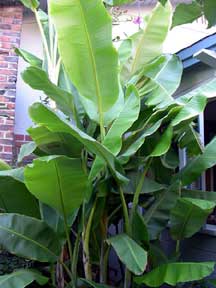
Bamboo is an ancient plant that has been utilized in countries like India, China, Vietnam, Borneo, Philippines and many other cultures in the East and Southeast Asia for centuries. Its uses are numerous from housing material, fuel, baskets, ropes, boats, tools, food, musical instruments to furniture. Bamboo is much less known in the West and it's importance as a versatile resource is often overlooked.
One of the uses for bamboo was creating a simple cooking implement that allowed you to boil rice. The following photos take you through the process of using the bamboo as a rice cooker. Ideally, you want to use a species of bamboo that has a thick wall, large diameter, and long sections between the nodes. The species that was used in the demonstration was commonly called Giant Timber Bamboo (Phyllostachys bambusoides). The interior diameter was 2 1/2 inches. The length was 12 inches. A section of the bamboo was cut with the closed node on one end and a open section on the other end.

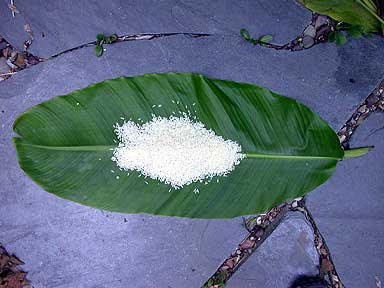
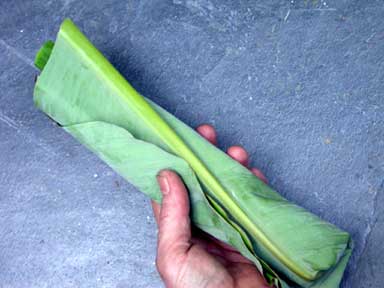
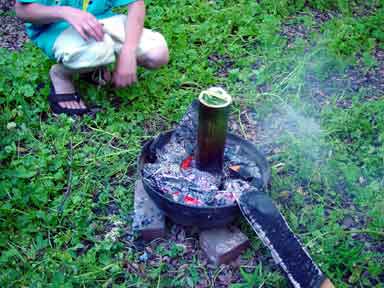
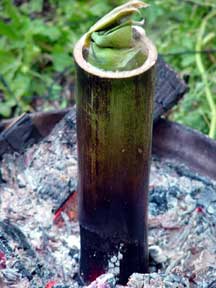
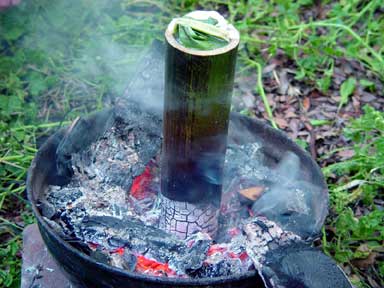
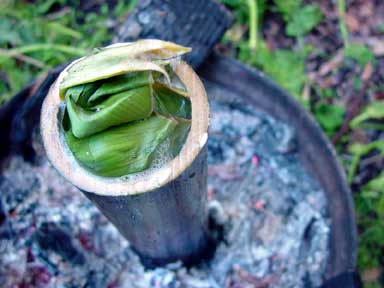
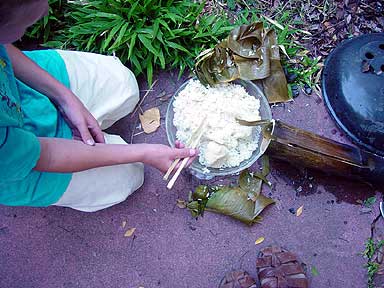
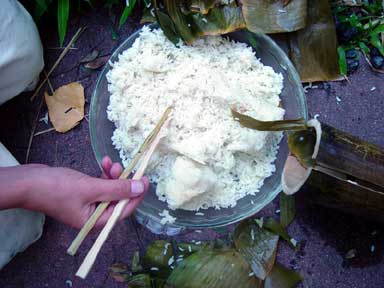
Unwrap the steaming rice from the banana leaf bundle. Create a pair of chopsticks from the bamboo and have yourself a nutritious meal. The banana leaf imparts a mild, sweet taste to the rice.
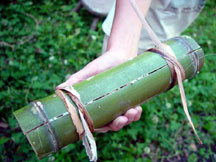
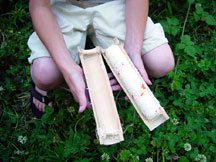
If you do not have access to banana leaves, you can split the bamboo lengthwise and stuff the chamber with rice. NOTE: If you split the bamboo further up towards the top, instead of in the middle, the split, bottom chamber will hold more water for the cooking process. When cutting the bamboo for this procedure, be sure to include the closed nodes on both ends. Fill the chamber with water and tie the two halves with thin bamboo splits. Place the bamboo lengthwise on the coals and let the water boil.
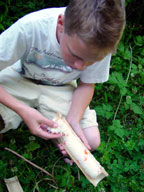
![]()
E-mail your comments to "Bob Gillis" at bob@shelter-systems.com or "Dino Labiste" at KahikoArts@yahoo.com,
We hope the information on the PrimitiveWays website is both instructional and enjoyable. Understand that no warranty or guarantee is included. We expect adults to act responsibly and children to be supervised by a responsible adult. If you use the information on this site to create your own projects or if you try techniques described on PrimitiveWays, behave in accordance with applicable laws, and think about the sustainability of natural resources. Using tools or techniques described on PrimitiveWays can be dangerous with exposure to heavy, sharp or pointed objects, fire, stone tools and hazards present in outdoor settings. Without proper care and caution, or if done incorrectly, there is a risk of property damage, personal injury or even death. So, be advised: Anyone using any information provided on the PrimitiveWays website assumes responsibility for using proper care and caution to protect property, the life, health and safety of himself or herself and all others. He or she expressly assumes all risk of harm or damage to all persons or property proximately caused by the use of this information.
© PrimitiveWays 2017